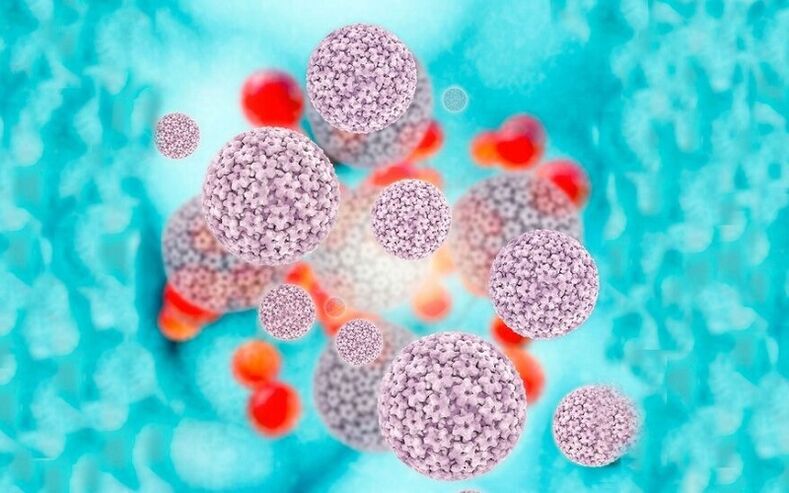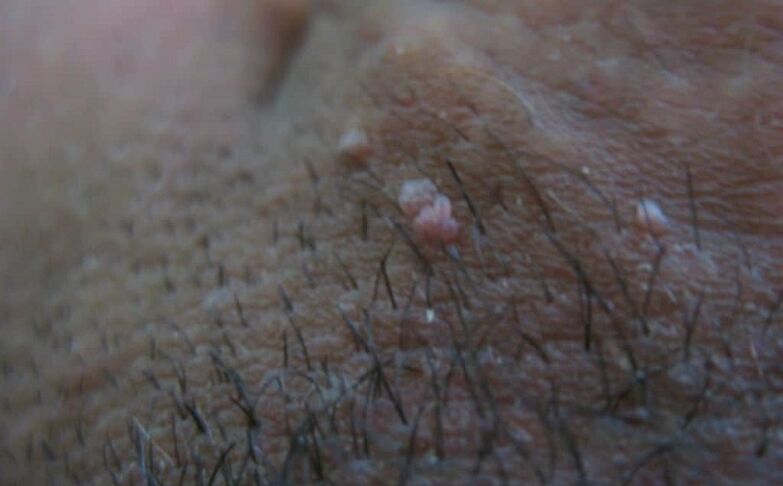Papillomas of the labia are a relatively sensitive problem that creates dissatisfaction with oneself and a decrease in the quality of sex life. They are difficult to hide, they can create discomfort during intercourse, so papillomas should be removed. In addition, in some cases, growth of the genitals in women can be a dangerous risk of developing cancer.
Causes of papillomas to form
Papillomas of the labia or genital warts are the result of infection with the human papillomavirus. In total, there are more than 100 strains of this virus, which differ in the type of neoplasms and the degree of risk of developing oncology.
The virus enters the body primarily through sexual contact against a background of reduced immunity. At the same time, a man with an infected woman may not have visible signs that the virus is present, since papillomas in men do not always appear on the skin.
Decreased immunity occurs against a background of recently transmitted infectious diseases, vitamin deficiency or chronic stress. Papillomas of the labia can cause a decrease in local immunity, leading to various inflammatory and infectious diseases of the genital organs, including thrush and bacterial vaginosis. At the same time, for infection, it is sufficient to use other people 's personal hygiene products, so that anesthetic growths appear on the labia after a while.
So, despite the fact that the virus is transmitted from person to person, the causes of papillomas in the labia in women are as follows:
- reduced immunity after ARVI, pneumonia, influenza or tonsillitis;
- vaginal infections;
- not respecting personal hygiene;
- stress;
- unbalanced diet;
- having a chronic focus of infection in the body;
- promiscuous sex.
All of this immunity reduces immunity, both general and local. As a result, the body experiences various negative influences and is unable to resist the human papillomavirus virus.
Often, the virus does not manifest itself, restricted by human immunity. This is only true if the person is completely healthy. Then the virus can be asymptomatic in the body for a long time. The formation of papillomas occurs against a background of decreased immunity. If this does not happen in the coming years, the body can deal with the virus on its own, however, self-medication usually takes at least 18 months.

What do papillomas look like on the genitals?
How the infection of a woman's labia manifests itself depends on a number of factors:
- type of virus;
- concentration of the virus in the body;
- growth localization.
The formation of papillomas on the labia minora is due to the influence of conditional oncogenic or oncogenic strains of the virus (16, 18, 31, 32, 45 and other types). It is easy to understand how such papillomas look on the labia, knowing what a condyloma is. These are small papillae with rough edges that rise above the surface of the mucous membrane. They usually do not have a different color, or are slightly lighter than mucous membranes. The manifestations of the papilloma virus on the labia, which stimulates the development of genital warts, can spread to a woman's perineum, vulva and vagina.
Condylomas are always formed only on the mucous membranes. Papillomas of the inner labia in women are not visible, they are formed only in areas with a thin epidermis.
Papillomas on the leg are small balls that rise above the skin. They have smooth borders of the right shape, they may be a little lighter or darker than the rest of the skin. When pressed, the papillomas do not hurt the labia, under the fingers feel the homogeneous structure of the growth. This type of neoplasm is seen in the groin folds and labia majora.
Almost any of the known methods are used to remove papillomas of the labia, since the risks of burns or deep damage to the epidermis are small. Papillomas of the labia minora are treated in a comprehensive manner, since such growths can be dangerous.
Warts can form in the following areas:
- labia beag;
- vulva;
- vagina;
- Cervix;
- anal opening;
- crotch;
- urethra.
The photograph of papilloma on the labia is not the same as the images of growth on other parts of the body, although papillomas or condylomas in the vagina and vagina are difficult to detect on their own.
Papilloma formation on the labia during pregnancy is associated with a decrease in immunity. In this case, timely treatment of the consequences of HPV plays an important role, otherwise there is a risk of the baby becoming infected as it passes through the birth canal.

Why are papillomas dangerous?
Sexual contact and the human papillomavirus virus are directly related to the labia in women. First, when contact is made with the affected mucosa, there is a risk of transmitting the virus to the sexual partner. Secondly, with friction during intercourse, papillomas and condylomas, which are accompanied by pain, can be damaged. There is a risk of papilloma becoming infected, becoming inflamed and can begin to progress to cancer.
There are cases when a woman has massive papilloma of the labia majora due to repeated injuries. No woman is insured against such a risk. Large growths are very dangerous and should be removed first.
Cervical cancer can lead to papilloma on the mucous membrane of the labia minora and in the vagina. This is due to the activity of the papillomavirus, which is manifested by an excessive number of epithelial cells on the labia minora and other parts of the mucous membrane. In this case, the damage to the cells of the cervix develops in several stages. At first, corrosion is created due to HPV on the labia, then it changes to dysplasia, which is in a precancerous condition. Lack of timely treatment of dysplasia leads to the development of cervical cancer.
It should be understood that any papillomas on the mucous membrane of the labia are a potential hazard. The papilloma itself can progress to cancer, and not only stimulate cervical oncology. Symptoms of malignant papilloma include an increase in the size of the growth, pain and itching, discharge with an unpleasant odor from the growing body and softening of the skin. If you notice such symptoms, you should consult a doctor as soon as possible - an oncologist, gynecologist or dermatovenerologist.
Treatment and removal of papillomas
How to treat papillomas on the labia depends on their number and size. It is recommended not to take self-medication, but to consult a doctor who will tell you in detail what to do to remove and prevent recurrence of papillomas on the labia.
Getting rid of papillomas on the labia should be consistent. First, the activity of the virus is suppressed, then the growth itself is removed and, if necessary, immunostimulating therapy is performed. To accurately determine the sequence of treatment, a PCR analysis should be passed, which shows the amount of activity and concentration of the virus, and allows you to determine its strain.
If a woman, 16 or 18, is found to have a potentially dangerous viral strain, complex therapy is needed. In this case, all removed papilloma is sent for histological analysis and the cervix is fully examined for changes in the epitheliiam.
How to remove papillomas of the labia depends on the exact place. Skin neoplasms are removed in any available way - from surgery to folk music. This is because the skin of the labia majora is quite thick, so complications rarely occur after removal. It should be noted that the formations on the labia majora are not a health hazard in most cases and do not induce cancer.
Genital warts are removed on the mucous membranes with the help of laser exposure or by means of radio waves. Both of these methods are considered to be the quietest, although they do not clog the vessels that feed the growth, so the risk of bleeding is small. When neoplasms are removed from the cervix or vagina, histological analysis is necessary to exclude the onset of the pathological process.

You should consult your doctor about how to remove papillomas of the labia. If the analysis showed a high concentration of the virus in the body, there is a risk of recurrence of genital warts, therefore, complex therapy, including three stages, is performed.
- After the strain of the virus is determined, antiviral and immunomodulatory therapy is prescribed for the woman. This is necessary to suppress the virus and minimize the risk of papillomas recurring.
- After drug therapy, which takes on average several weeks, papillomas are removed using the method selected and agreed with the doctor. Laser or wave method removal is recommended.
- Some time after the growths have been removed, the analysis should be repeated. If the concentration of the virus remains high, a second course of drug therapy is prescribed.
The drugs used to treat papillomas are available in the form of tablets and ointments. Antiviral ointments with immunomodulatory properties are recommended for the treatment of papillomas of the skin. If the growths are visible on the mucous membranes, taking pills is indicated.
Usually, after papillomas and drug therapy are removed, the body heals by itself after a few months or years. In order to avoid the recurrence of papillomas, a woman must follow the rules of hygiene, maintain her own immunity and avoid unprotected sexual intercourse.














































































